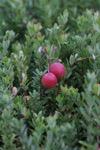Notice (8): Undefined index: geoplugin_countryCode [APP/Controller/AppController.php, line 94]Code Context$Country_code = '';if($ip_data && $ip_data['geoplugin_countryCode'] != null) {$Country_code = $ip_data['geoplugin_countryCode'];$client = null $forward = null $remote = '216.73.216.187' $ip = '216.73.216.187' $ch = unknown $ip_data_in = '{ "geoplugin_status":403, "geoplugin_message": "geoPlugin API is no longer available for free use. To continue access, please upgrade to a paid plan", "geoplugin_url": "https://www.geoplugin.com/subscription" } ' $ip_data = [ 'geoplugin_status' => '403', 'geoplugin_message' => 'geoPlugin API is no longer available for free use. To continue access, please upgrade to a paid plan', 'geoplugin_url' => 'https://www.geoplugin.com/subscription' ] $Country_code = ''App\Controller\AppController::initialize() - APP/Controller/AppController.php, line 94 App\Controller\ProductsController::initialize() - APP/Controller/ProductsController.php, line 31 Cake\Controller\Controller::__construct() - CORE/src/Controller/Controller.php, line 273 ReflectionClass::newInstance() - [internal], line ?? Cake\Http\ControllerFactory::create() - CORE/src/Http/ControllerFactory.php, line 47 Cake\Http\ActionDispatcher::dispatch() - CORE/src/Http/ActionDispatcher.php, line 91 Cake\Http\BaseApplication::__invoke() - CORE/src/Http/BaseApplication.php, line 235 Cake\Http\Runner::__invoke() - CORE/src/Http/Runner.php, line 65 Cake\Http\Runner::__invoke() - CORE/src/Http/Runner.php, line 65 Cake\Http\Middleware\CsrfProtectionMiddleware::__invoke() - CORE/src/Http/Middleware/CsrfProtectionMiddleware.php, line 104 Cake\Http\Runner::__invoke() - CORE/src/Http/Runner.php, line 65 Cake\Http\Runner::run() - CORE/src/Http/Runner.php, line 51 Cake\Routing\Middleware\RoutingMiddleware::__invoke() - CORE/src/Routing/Middleware/RoutingMiddleware.php, line 168 Cake\Http\Runner::__invoke() - CORE/src/Http/Runner.php, line 65 Cake\Routing\Middleware\AssetMiddleware::__invoke() - CORE/src/Routing/Middleware/AssetMiddleware.php, line 88 Cake\Http\Runner::__invoke() - CORE/src/Http/Runner.php, line 65 Cake\Error\Middleware\ErrorHandlerMiddleware::__invoke() - CORE/src/Error/Middleware/ErrorHandlerMiddleware.php, line 96
| Scientific: | Vaccinium macrocarpon |
|---|---|
| Other: | Cranberry |
| Family: | Ericaceae |
Cranberry is both a food and an herb used primarily for urinary tract infections. It contains polyphenols (anthocyanins) that possess an anti-adherence action: they bind to certain infectious bacteria and prevent them from adhering and infecting the cells of the mucous membranes. In addition to binding to bacteria in the urinary tract (e.g. E. coli), cranberries also have an effect on bacteria that cause gingivitis and stomach ulcers.
Because cranberries are rich in polyphenols they possess important antioxidant effects and have also been shown to have benefit in cardiovascular disease and diabetes.
Anti-adherance actions are used to treat and prevent UTI.
Urinary
• urinary tract infections (UTI)
• prostatitis
• urolithiasis (calcium oxalate stones)
Gastrointestinal
• gingivitis
• tonsilitis
• peptic ulcer - antiadherance effects H. pylori
• Antiseptic (Urinary)
• Antiadherence
• Diuretic
• Astringent
• Antilithogenic
• Antioxidant
• Anticancer
• Proanthocyanidins
• Anthocyanidins
• Flavonols
• Phenolic Acids
• Fructose
• Triterpenoids
• Juice (unsweetened): 250-500 ml qd
• Generally considered safe when used as indicated.
• Blood thinners • may interact with coumadin
• Iron supplements • may reduce the absorption of non-heme iron. Take iron supplements a few hours apart.
Barnes J, Anderson LA, Phillipson JD. Herbal Medicines, 3rd ed. London: Pharmaceutical Press, 2007.
Bone K. Principles and Practice of Phytotherapy. Edinburgh: Churchill Livingstone, 2000.
Bone K. A Clinical Guide to Blending Liquid Herbs: Herbal Formulations for the Individual Patient. St Louis, MO: Churchill Livingstone, 2003.
Brinker F. The Toxicology of Botanical Medicines, 3rd ed. Sandy, Oregon: Eclectic Medical Publications, 2000.
Felter HW, Lloyd JU. King's American Dispensatory. 1898. http://www.ibiblio.org/herbmed/eclectic/kings/main.html. Accessed: August 19, 2006.
Hoffman D. Medical Herbalism. Rochester, Vermont: Healing Arts Press, 2003.
Weiss RF. Herbal Medicine. Beaconsfield, England: Beaconsfield Publishers Ltd, 1988.
Williamson EM, ed. Major Herbs of Ayurveda. Edinburgh: Churchill Livingstone, 2002
Disclaimer: This content is subject to change. The information is intended to inform and educate; it does not replace the medical evaluation, advice, diagnosis or treatment by a healthcare professional. www.nhpassist.com © 2014 NDAssist Inc. and/or its affiliates. All rights reserved.

|
Cranberry
SummaryCranberry is both a food and an herb used primarily for urinary tract infections. It contains polyphenols (anthocyanins) that possess an anti-adherence action: they bind to certain infectious bacteria and prevent them from adhering and infecting the cells of the mucous membranes. In addition to binding to bacteria in the urinary tract (e.g. E. coli), cranberries also have an effect on bacteria that cause gingivitis and stomach ulcers. IndicationsSign in requiredActionsSign in requiredConstituentsSign in requiredPosologySign in requiredSafetySign in requiredInteractionsSign in requiredReferencesSign in required |
|---|